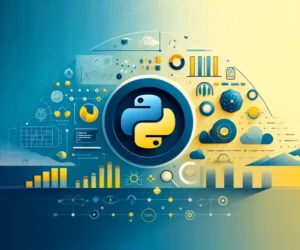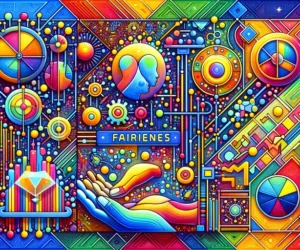
Exploring the Cutting-Edge Machine Learning Applications for IoT

The integration of Machine Learning (ML) and the Internet of Things (IoT) is revolutionizing various industries by enabling smarter, more efficient, and responsive systems. As IoT devices generate vast amounts of data, Machine Learning algorithms analyze this data to derive actionable insights, automate processes, and improve decision-making. This article delves into the latest Machine Learning applications for IoT, showcasing their transformative impact and future potential.
Smart Homes: Enhancing Comfort and Efficiency
Personalized User Experience
In smart homes, Machine Learning enhances user experience by personalizing device interactions based on user behavior and preferences. For instance, smart thermostats learn residents' schedules and temperature preferences, optimizing heating and cooling to ensure comfort while saving energy. Similarly, smart lighting systems adjust lighting based on occupants' activities and natural light availability, creating a seamless and comfortable living environment.
Voice assistants like Amazon Alexa and Google Assistant use natural language processing (NLP) to understand and respond to voice commands, providing a hands-free way to control smart devices. These assistants learn from users' interactions, becoming more accurate and personalized over time. By leveraging ML, smart homes create a more intuitive and user-friendly experience.
Energy Management and Conservation
Machine Learning plays a crucial role in energy management within smart homes. By analyzing data from various sensors and devices, ML algorithms identify patterns in energy usage and provide recommendations for reducing consumption. For example, smart meters and energy management systems can detect when appliances are not in use and suggest turning them off to save energy.
Real-Life Examples of Unsupervised Machine LearningAdvanced algorithms predict energy demand based on historical data and external factors such as weather conditions. This enables smart grids to manage energy distribution more efficiently, reducing waste and lowering costs. Machine Learning thus contributes to more sustainable and cost-effective energy usage in smart homes.
Example of energy consumption prediction using Python:
import pandas as pd
from sklearn.model_selection import train_test_split
from sklearn.ensemble import RandomForestRegressor
from sklearn.metrics import mean_absolute_error
# Load dataset
data = pd.read_csv('energy_consumption.csv')
X = data.drop(columns=['energy_usage'])
y = data['energy_usage']
# Split data
X_train, X_test, y_train, y_test = train_test_split(X, y, test_size=0.2, random_state=42)
# Train model
model = RandomForestRegressor()
model.fit(X_train, y_train)
# Predict and evaluate
predictions = model.predict(X_test)
mae = mean_absolute_error(y_test, predictions)
print(f'Mean Absolute Error: {mae}')Security and Surveillance
Smart home security systems benefit significantly from Machine Learning by enhancing surveillance and threat detection capabilities. ML algorithms analyze video feeds from security cameras to detect unusual activities and potential intrusions. These systems can differentiate between normal activities, such as pets moving around, and potential security threats, reducing false alarms.
Facial recognition technology adds another layer of security by identifying authorized individuals and alerting homeowners of unknown visitors. Machine Learning algorithms continuously improve accuracy by learning from new data, making smart home security systems more reliable and effective in protecting residents and property.
Beginner's Guide to Machine Learning Projects: Step-by-StepIndustrial IoT: Optimizing Operations and Maintenance
Predictive Maintenance
In the industrial sector, Machine Learning is transforming maintenance practices through predictive maintenance. Traditional maintenance schedules are often based on fixed intervals, which can lead to unnecessary downtime or unexpected equipment failures. Predictive maintenance uses data from IoT sensors to predict when equipment is likely to fail, allowing for timely interventions.
ML models analyze sensor data to identify patterns and anomalies that indicate potential issues. This approach minimizes downtime, reduces maintenance costs, and extends the lifespan of equipment. Industries such as manufacturing, energy, and transportation are adopting predictive maintenance to improve operational efficiency and reliability.
Example of predictive maintenance using Python:
import pandas as pd
from sklearn.model_selection import train_test_split
from sklearn.ensemble import GradientBoostingClassifier
from sklearn.metrics import classification_report
# Load dataset
data = pd.read_csv('sensor_data.csv')
X = data.drop(columns=['failure'])
y = data['failure']
# Split data
X_train, X_test, y_train, y_test = train_test_split(X, y, test_size=0.2, random_state=42)
# Train model
model = GradientBoostingClassifier()
model.fit(X_train, y_train)
# Predict and evaluate
predictions = model.predict(X_test)
report = classification_report(y_test, predictions)
print(report)Quality Control and Process Optimization
Machine Learning enhances quality control and process optimization in industrial settings. By analyzing data from production lines, ML algorithms identify defects and deviations from quality standards in real-time. This enables immediate corrective actions, reducing waste and improving product quality.
Machine Learning in Java: Accuracy for Diabetes PredictionProcess optimization involves adjusting operational parameters to maximize efficiency and output. ML models analyze historical data to recommend optimal settings for machinery and production processes. This continuous improvement approach leads to higher productivity, lower costs, and better resource utilization.
Supply Chain Management
Machine Learning is revolutionizing supply chain management by improving forecasting, inventory management, and logistics. Accurate demand forecasting helps businesses maintain optimal inventory levels, reducing both stockouts and excess inventory. ML algorithms analyze historical sales data, market trends, and external factors to predict future demand accurately.
In logistics, Machine Learning optimizes routing and delivery schedules, reducing transportation costs and improving delivery times. By analyzing data from various sources, including traffic conditions and weather forecasts, ML models recommend the most efficient routes for delivery vehicles. This enhances overall supply chain efficiency and customer satisfaction.
Healthcare IoT: Transforming Patient Care and Monitoring
Remote Patient Monitoring
Machine Learning and IoT are transforming healthcare by enabling remote patient monitoring. Wearable devices and IoT sensors continuously collect health data, such as heart rate, blood pressure, and glucose levels. ML algorithms analyze this data to detect anomalies and predict potential health issues, allowing for timely interventions.
Top ETFs for Machine Learning and AI InvestmentsRemote monitoring improves patient outcomes by providing real-time insights into their health status. It also reduces the need for frequent hospital visits, lowering healthcare costs and improving convenience for patients. Machine Learning thus plays a vital role in proactive and personalized healthcare.
Personalized Treatment Plans
Machine Learning enables the development of personalized treatment plans by analyzing patient data and medical histories. ML models identify patterns and correlations in the data, providing insights into the most effective treatments for individual patients. This approach enhances the precision and efficacy of medical treatments, leading to better patient outcomes.
Personalized treatment plans consider various factors, including genetics, lifestyle, and environmental influences. By leveraging Machine Learning, healthcare providers can offer tailored treatments that address the unique needs of each patient. This personalized approach is transforming healthcare delivery and improving patient satisfaction.
Example of personalized treatment plan recommendation using Python:
Deploying Machine Learning Models as Web Services: Best Practicesimport pandas as pd
from sklearn.model_selection import train_test_split
from sklearn.ensemble import RandomForestClassifier
from sklearn.metrics import accuracy_score
# Load dataset
data = pd.read_csv('patient_data.csv')
X = data.drop(columns=['treatment_outcome'])
y = data['treatment_outcome']
# Split data
X_train, X_test, y_train, y_test = train_test_split(X, y, test_size=0.2, random_state=42)
# Train model
model = RandomForestClassifier()
model.fit(X_train, y_train)
# Predict and evaluate
predictions = model.predict(X_test)
accuracy = accuracy_score(y_test, predictions)
print(f'Accuracy: {accuracy}')Drug Discovery and Development
The integration of Machine Learning and IoT is accelerating drug discovery and development processes. ML algorithms analyze vast datasets from clinical trials, genomics, and other sources to identify potential drug candidates and predict their efficacy. This approach reduces the time and cost associated with traditional drug discovery methods.
IoT devices collect real-time data from clinical trial participants, providing valuable insights into drug effects and patient responses. Machine Learning models process this data to identify patterns and optimize trial designs, improving the success rate of new drug developments. This synergy is revolutionizing the pharmaceutical industry and bringing new treatments to market faster.
Smart Cities: Enhancing Urban Living
Traffic Management and Optimization
Machine Learning is transforming traffic management in smart cities by optimizing traffic flow and reducing congestion. IoT sensors collect data on vehicle movements, traffic signals, and road conditions. ML algorithms analyze this data to predict traffic patterns and recommend optimal signal timings and route adjustments.
Smart traffic management systems improve overall urban mobility by reducing travel times and minimizing traffic jams. They also contribute to environmental sustainability by reducing fuel consumption and emissions. Machine Learning thus plays a crucial role in creating more efficient and livable urban environments.
The Top Machine Learning Applications Transforming Smart CitiesWaste Management
Efficient waste management is essential for sustainable urban living. Machine Learning and IoT technologies are improving waste collection and disposal processes. IoT sensors in waste bins monitor fill levels and send data to central systems. ML algorithms analyze this data to optimize collection routes and schedules, ensuring timely and efficient waste removal.
Smart waste management systems reduce operational costs and environmental impact by minimizing unnecessary collections and optimizing resource use. They also enhance urban cleanliness and public health. By leveraging Machine Learning, cities can create more efficient and sustainable waste management solutions.
Public Safety and Emergency Response
Machine Learning enhances public safety and emergency response in smart cities by providing real-time insights and predictive capabilities. IoT sensors and surveillance cameras monitor public spaces, detecting unusual activities and potential security threats. ML algorithms analyze this data to alert authorities and trigger appropriate responses.
In emergency situations, Machine Learning helps optimize resource allocation and response strategies. Predictive models analyze historical data on emergencies, such as natural disasters and accidents, to improve preparedness and response effectiveness. This proactive approach enhances public safety and resilience in urban areas.
Example of emergency response optimization using Python:
import pandas as pd
from sklearn.model_selection import train_test_split
from sklearn.ensemble import GradientBoostingClassifier
from sklearn.metrics import classification_report
# Load dataset
data = pd.read_csv('emergency_data.csv')
X = data.drop(columns=['response_time'])
y = data['response_time']
# Split data
X_train, X_test, y_train, y_test = train_test_split(X, y, test_size=0.2, random_state=42)
# Train model
model = GradientBoostingClassifier()
model.fit(X_train, y_train)
# Predict and evaluate
predictions = model.predict(X_test)
report = classification_report(y_test, predictions)
print(report)Future Prospects and Challenges
Advancements in Machine Learning and IoT
The future of Machine Learning and IoT is promising, with advancements in technology driving new applications and innovations. Emerging technologies such as edge computing and 5G are enhancing the capabilities of IoT devices and enabling faster, more efficient data processing. These advancements will further integrate Machine Learning into IoT systems, creating smarter and more responsive solutions.
Federated learning is another promising development, enabling collaborative Machine Learning without compromising data privacy. This approach allows multiple devices to learn from shared models while keeping data localized, enhancing security and scalability. The continued evolution of Machine Learning and IoT will unlock new possibilities and transform various industries.
Addressing Data Privacy and Security
As Machine Learning and IoT applications proliferate, addressing data privacy and security concerns is crucial. IoT devices collect vast amounts of sensitive data, raising risks of breaches and misuse. Ensuring robust encryption, access controls, and anonymization techniques are essential for protecting data.
Regulatory frameworks such as GDPR and CCPA mandate stringent data protection measures, impacting how organizations handle and analyze data. Establishing clear data governance policies and educating stakeholders about best practices for data security is vital for maintaining trust and compliance.
Overcoming Integration Challenges
Integrating Machine Learning with IoT systems poses technical and operational challenges. Ensuring compatibility between diverse IoT devices and ML algorithms requires robust standards and protocols. Scalability is another challenge, as handling large volumes of data from numerous devices demands significant computational resources.
Investing in scalable infrastructure and leveraging cloud platforms such as AWS, Google Cloud, and Azure can address these challenges. These platforms offer scalable solutions for data storage, processing, and Machine Learning model deployment, enabling organizations to harness the full potential of IoT and Machine Learning.
The synergy between Machine Learning and IoT is transforming industries and enhancing the quality of life across various domains. From smart homes and industrial IoT to healthcare and smart cities, the applications of Machine Learning in IoT are vast and impactful. As technology continues to evolve, the integration of Machine Learning and IoT will drive further innovations, creating smarter, more efficient, and responsive systems that revolutionize how we live and work.
If you want to read more articles similar to Exploring the Cutting-Edge Machine Learning Applications for IoT, you can visit the Applications category.



You Must Read